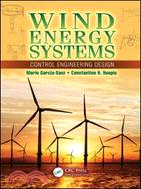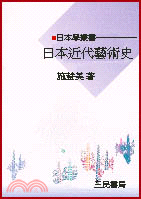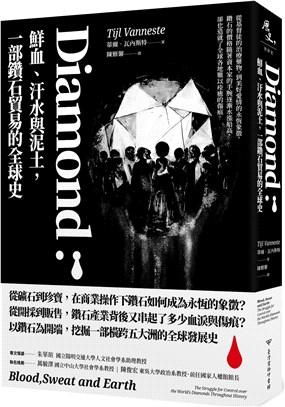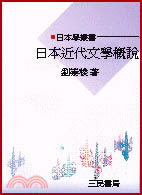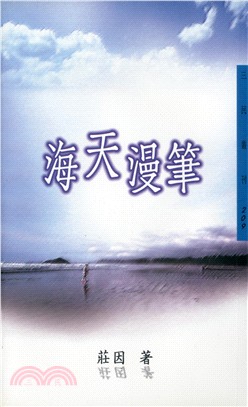定價
:NT$ 7150 元優惠價
:90 折 6435 元
若需訂購本書,請電洽客服 02-25006600[分機130、131]。
相關商品
商品簡介
作者簡介
目次
商品簡介
Presenting the latest developments in the field, Wind Energy Systems: Control Engineering Design offers a novel take on advanced control engineering design techniques for wind turbine applications. The book introduces concurrent quantitative engineering techniques for the design of highly efficient and reliable controllers, which can be used to solve the most critical problems of multi-megawatt wind energy systems.
This book is based on the authors’ experience during the last two decades designing commercial multi-megawatt wind turbines and control systems for industry leaders, including NASA and the European Space Agency. This work is their response to the urgent need for a truly reliable concurrent engineering methodology for the design of advanced control systems. Outlining a roadmap for such a coordinated architecture, the authors consider the links between all aspects of a multi-megawatt wind energy project, in which the wind turbine and the control system must be cooperatively designed to achieve an optimized, reliable, and successful system.
Look inside for links to a free download of QFTCT—a new interactive CAD tool for QFT controller design with MATLAB® that the authors developed with the European Space Agency.
The textbook’s big-picture insights can help students and practicing engineers control and optimize a wind energy system, in which large, flexible, aerodynamic structures are connected to a demanding variable electrical grid and work automatically under very turbulent and unpredictable environmental conditions. The book covers topics including robust QFT control, aerodynamics, mechanical and electrical dynamic modeling, economics, reliability, and efficiency. It also addresses standards, certification, implementation, grid integration, and power quality, as well as environmental and maintenance issues.
To reinforce understanding, the authors present real examples of experimentation with commercial multi-megawatt direct-drive wind turbines, as well as on-shore, offshore, floating, and airborne wind turbine applications. They also offer a unique in-depth exploration of the quantitative feedback theory (QFT)—a proven, successful robust control technique for real-world applications—as well as advanced switching control techniques that help engineers exceed classical linear limitations.
This book is based on the authors’ experience during the last two decades designing commercial multi-megawatt wind turbines and control systems for industry leaders, including NASA and the European Space Agency. This work is their response to the urgent need for a truly reliable concurrent engineering methodology for the design of advanced control systems. Outlining a roadmap for such a coordinated architecture, the authors consider the links between all aspects of a multi-megawatt wind energy project, in which the wind turbine and the control system must be cooperatively designed to achieve an optimized, reliable, and successful system.
Look inside for links to a free download of QFTCT—a new interactive CAD tool for QFT controller design with MATLAB® that the authors developed with the European Space Agency.
The textbook’s big-picture insights can help students and practicing engineers control and optimize a wind energy system, in which large, flexible, aerodynamic structures are connected to a demanding variable electrical grid and work automatically under very turbulent and unpredictable environmental conditions. The book covers topics including robust QFT control, aerodynamics, mechanical and electrical dynamic modeling, economics, reliability, and efficiency. It also addresses standards, certification, implementation, grid integration, and power quality, as well as environmental and maintenance issues.
To reinforce understanding, the authors present real examples of experimentation with commercial multi-megawatt direct-drive wind turbines, as well as on-shore, offshore, floating, and airborne wind turbine applications. They also offer a unique in-depth exploration of the quantitative feedback theory (QFT)—a proven, successful robust control technique for real-world applications—as well as advanced switching control techniques that help engineers exceed classical linear limitations.
作者簡介
Dr. Mario García-Sanz is Professor at Case Western Reserve University (CWRU), Ohio, the Milton and Tamar Maltz Professor in Energy Innovation, and Director of the Wind Energy and Control Systems Center at CWRU. As Senior Advisor for the President of the M.Torres Group and Professor at the Public University of Navarra, he played a central role in the design and field experimentation of advanced multi-megawatt wind turbines for industry. Dr. García-Sanz held visiting professorships at the Control Systems Centre, UMIST (UK, 1995); at Oxford University (UK, 1996); at the Jet Propulsion Laboratory NASA-JPL (California, 2004); and at the European Space Agency ESA-ESTEC (The Netherlands, 2008).
He holds 20 industrial patents, has done more than 40 large research projects for industry and space agencies, and is author or coauthor of more than 150 research papers, including the books “Quantitative Feedback Theory: Theory and Applications”, Taylor & Francis (2006), and “Wind Energy Systems: Control Engineering Design”, Taylor & Francis (2012).
Dr. García-Sanz is Subject Editor of the International Journal of Robust and Nonlinear Control, a member of IFAC and IEEE Technical Committees, and served as NATO/RTO Lecture Series Director and as Guest Editor of international journals (Robust control, QFT control, Wind turbine control, Spacecraft control). He was awarded the IEE Heaviside Prize (UK) in 1995 and the BBVA research award (Spain) in 2001. Professor García-Sanz's main research interest focuses on bridging the gap between advanced control theory and applications, with special emphasis in Energy Innovation, Wind Energy, Space, Environmental and Industrial Applications.
He holds 20 industrial patents, has done more than 40 large research projects for industry and space agencies, and is author or coauthor of more than 150 research papers, including the books “Quantitative Feedback Theory: Theory and Applications”, Taylor & Francis (2006), and “Wind Energy Systems: Control Engineering Design”, Taylor & Francis (2012).
Dr. García-Sanz is Subject Editor of the International Journal of Robust and Nonlinear Control, a member of IFAC and IEEE Technical Committees, and served as NATO/RTO Lecture Series Director and as Guest Editor of international journals (Robust control, QFT control, Wind turbine control, Spacecraft control). He was awarded the IEE Heaviside Prize (UK) in 1995 and the BBVA research award (Spain) in 2001. Professor García-Sanz's main research interest focuses on bridging the gap between advanced control theory and applications, with special emphasis in Energy Innovation, Wind Energy, Space, Environmental and Industrial Applications.
目次
Introduction
Broad Context and Motivation
Concurrent Engineering: A Road Map for Energy
Quantitative Robust Control
Novel CAD Toolbox for QFT Controller Design
Outline
Part I: Advanced Robust Control Techniques: QFT and Nonlinear Switching
Introduction to QFT
Quantitative Feedback Theory
Why Feedback?
QFT Overview
Insight into the QFT Technique
Benefits of QFT
MISO Analog QFT Control System
Introduction
QFT Method (Single-Loop MISO System)
Design Procedure Outline
Minimum-Phase System Performance Specifications
J LTI Plant Models
Plant Templates of Pι(s), P( j_i )
Nominal Plant
U-Contour (Stability Bound)
Tracking Bounds BR(jω) on the NC
Disturbance Bounds BD(jωi)
Composite Boundary Bo(jωi)
Shaping of Lo(jω)
Guidelines for Shaping Lo(jω)
Design of the Prefilter F(s)
Basic Design Procedure for a MISO System
Design Example 1
Design Example 2
Template Generation for Unstable Plants
Discrete Quantitative Feedback Technique
Introduction
Bilinear Transformations
Non-Minimum-Phase Analog Plant
Discrete MISO Model with Plant Uncertainty
QFT w-Domain DIG Design
Simulation
Basic Design Procedure for a MISO S-D Control System
QFT Technique Applied to the PCT System
Applicability of Design Technique to Other Plants
Designing L(w) Directly
Diagonal MIMO QFT
Introduction
Examples and Motivation
MIMO Systems—Characteristics and Overview
MIMO QFT Control—Overview
Nonsequential Diagonal MIMO QFT (Method 1)
Sequential Diagonal MIMO QFT (Method 2)
Basically Noninteracting Loops
MIMO QFT with External (Input) Disturbances
Non-Diagonal MIMO QFT
Introduction
Non-Diagonal MIMO QFT: A Coupling Minimization Technique (Method 3)
Coupling Elements
Optimum Non-Diagonal Compensator
Coupling Effects
Quality Function of the Designed Compensator
Design Methodology
Some Practical Issues
Non-Diagonal MIMO QFT: A Generalized Technique (Method 4)
Reformulation
Translating Matrix Performance Specifications
Comparison of Methods 3 and 4
QFT for Distributed Parameter Systems
Introduction
Background
Generalized DPS Control System Structure
Extension of Quantitative Feedback Theory to DPS
Modeling Approaches for PDE
Examples
Nonlinear Switching Control Techniques
Introduction
System Stability under Switching
Methodology
Examples
Part II: Wind Turbine Control
Introduction to Wind Energy Systems
Introduction
Birth of Modern Wind Turbines
Market Sizes and Investments
Future Challenges and Opportunities
Standards and Certification for Wind Turbines
Introduction
Standards: Definition and Strategic Value
Standards: Structure and Development
Certification of Wind Turbines
General Concepts
Wind Turbine Control Objectives and Strategies
Introduction
Control Objectives
Control Strategies
Control System
Aerodynamics and Mechanical Modeling of Wind Turbines
Introduction
Aerodynamic Models
Mechanical Models
Electrical Modeling of Wind Turbines
Introduction
Electrical Models
Power Electronic Converters
Power Quality Characteristics
Wind Farms Integration in the Power System
Advanced Pitch Control System Design
Introduction
QFT Robust Control Design
Nonlinear Switching Multi-Objective Design
Nonlinear Robust Control Design for Large Parameter Variation
Experimental Results with the Direct-Drive Wind Turbine TWT-1.65
Introduction
Variable-Speed Direct-Drive Torres Wind Turbine Family
Torres Wind Turbine Pitch and Rotor Speed Control Results
Wind Farm Grid Integration: Torres Wind Turbine Results
Voltage Dip Solutions: Torres Wind Turbine Results
Blades Manufacturing: MIMO QFT Control for Industrial Furnaces
Introduction
Composite Materials
Industrial Furnace Description
Furnace Model
Estimation of Furnace Parameters
MIMO QFT Controller Design
Experimental Results
Smart Wind Turbine Blades
Introduction
General Description
Some History
Offshore Wind Energy: Overview
Introduction
History of Offshore Platforms
Offshore Wind Farms
Offshore Floating Wind Turbines
Airborne Wind Energy Systems
Introduction
Overview of Airborne Wind Energy Systems
Eagle System
Appendix A: Templates Generation
Appendix B: Inequality Bound Expressions
Appendix C: Analytical QFT Bounds
Appendix D: Essentials for Loop Shaping
Appendix E: Fragility Analysis with QFT
Appendix F: QFT Control Toolbox: User’s Guide
Appendix G: Controller Design Examples
Appendix H: Conversion of Units
Problems
Answers to Selected Problems
References
Index
Broad Context and Motivation
Concurrent Engineering: A Road Map for Energy
Quantitative Robust Control
Novel CAD Toolbox for QFT Controller Design
Outline
Part I: Advanced Robust Control Techniques: QFT and Nonlinear Switching
Introduction to QFT
Quantitative Feedback Theory
Why Feedback?
QFT Overview
Insight into the QFT Technique
Benefits of QFT
MISO Analog QFT Control System
Introduction
QFT Method (Single-Loop MISO System)
Design Procedure Outline
Minimum-Phase System Performance Specifications
J LTI Plant Models
Plant Templates of Pι(s), P( j_i )
Nominal Plant
U-Contour (Stability Bound)
Tracking Bounds BR(jω) on the NC
Disturbance Bounds BD(jωi)
Composite Boundary Bo(jωi)
Shaping of Lo(jω)
Guidelines for Shaping Lo(jω)
Design of the Prefilter F(s)
Basic Design Procedure for a MISO System
Design Example 1
Design Example 2
Template Generation for Unstable Plants
Discrete Quantitative Feedback Technique
Introduction
Bilinear Transformations
Non-Minimum-Phase Analog Plant
Discrete MISO Model with Plant Uncertainty
QFT w-Domain DIG Design
Simulation
Basic Design Procedure for a MISO S-D Control System
QFT Technique Applied to the PCT System
Applicability of Design Technique to Other Plants
Designing L(w) Directly
Diagonal MIMO QFT
Introduction
Examples and Motivation
MIMO Systems—Characteristics and Overview
MIMO QFT Control—Overview
Nonsequential Diagonal MIMO QFT (Method 1)
Sequential Diagonal MIMO QFT (Method 2)
Basically Noninteracting Loops
MIMO QFT with External (Input) Disturbances
Non-Diagonal MIMO QFT
Introduction
Non-Diagonal MIMO QFT: A Coupling Minimization Technique (Method 3)
Coupling Elements
Optimum Non-Diagonal Compensator
Coupling Effects
Quality Function of the Designed Compensator
Design Methodology
Some Practical Issues
Non-Diagonal MIMO QFT: A Generalized Technique (Method 4)
Reformulation
Translating Matrix Performance Specifications
Comparison of Methods 3 and 4
QFT for Distributed Parameter Systems
Introduction
Background
Generalized DPS Control System Structure
Extension of Quantitative Feedback Theory to DPS
Modeling Approaches for PDE
Examples
Nonlinear Switching Control Techniques
Introduction
System Stability under Switching
Methodology
Examples
Part II: Wind Turbine Control
Introduction to Wind Energy Systems
Introduction
Birth of Modern Wind Turbines
Market Sizes and Investments
Future Challenges and Opportunities
Standards and Certification for Wind Turbines
Introduction
Standards: Definition and Strategic Value
Standards: Structure and Development
Certification of Wind Turbines
General Concepts
Wind Turbine Control Objectives and Strategies
Introduction
Control Objectives
Control Strategies
Control System
Aerodynamics and Mechanical Modeling of Wind Turbines
Introduction
Aerodynamic Models
Mechanical Models
Electrical Modeling of Wind Turbines
Introduction
Electrical Models
Power Electronic Converters
Power Quality Characteristics
Wind Farms Integration in the Power System
Advanced Pitch Control System Design
Introduction
QFT Robust Control Design
Nonlinear Switching Multi-Objective Design
Nonlinear Robust Control Design for Large Parameter Variation
Experimental Results with the Direct-Drive Wind Turbine TWT-1.65
Introduction
Variable-Speed Direct-Drive Torres Wind Turbine Family
Torres Wind Turbine Pitch and Rotor Speed Control Results
Wind Farm Grid Integration: Torres Wind Turbine Results
Voltage Dip Solutions: Torres Wind Turbine Results
Blades Manufacturing: MIMO QFT Control for Industrial Furnaces
Introduction
Composite Materials
Industrial Furnace Description
Furnace Model
Estimation of Furnace Parameters
MIMO QFT Controller Design
Experimental Results
Smart Wind Turbine Blades
Introduction
General Description
Some History
Offshore Wind Energy: Overview
Introduction
History of Offshore Platforms
Offshore Wind Farms
Offshore Floating Wind Turbines
Airborne Wind Energy Systems
Introduction
Overview of Airborne Wind Energy Systems
Eagle System
Appendix A: Templates Generation
Appendix B: Inequality Bound Expressions
Appendix C: Analytical QFT Bounds
Appendix D: Essentials for Loop Shaping
Appendix E: Fragility Analysis with QFT
Appendix F: QFT Control Toolbox: User’s Guide
Appendix G: Controller Design Examples
Appendix H: Conversion of Units
Problems
Answers to Selected Problems
References
Index
主題書展
更多
主題書展
更多書展本週66折
您曾經瀏覽過的商品
購物須知
外文書商品之書封,為出版社提供之樣本。實際出貨商品,以出版社所提供之現有版本為主。部份書籍,因出版社供應狀況特殊,匯率將依實際狀況做調整。
無庫存之商品,在您完成訂單程序之後,將以空運的方式為你下單調貨。為了縮短等待的時間,建議您將外文書與其他商品分開下單,以獲得最快的取貨速度,平均調貨時間為1~2個月。
為了保護您的權益,「三民網路書店」提供會員七日商品鑑賞期(收到商品為起始日)。
若要辦理退貨,請在商品鑑賞期內寄回,且商品必須是全新狀態與完整包裝(商品、附件、發票、隨貨贈品等)否則恕不接受退貨。




